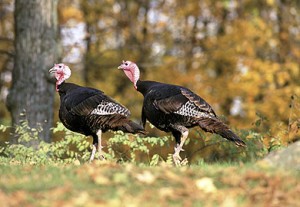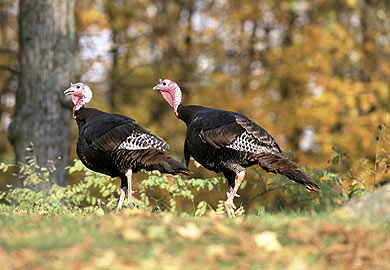 Over 40,000 turkey hunters take to the woods annually in South Carolina with hopes of harvesting a wily gobbler, and the 2013 spring turkey season was no exception.
Over 40,000 turkey hunters take to the woods annually in South Carolina with hopes of harvesting a wily gobbler, and the 2013 spring turkey season was no exception.
With an estimated harvest of 19,211 birds, the spring turkey harvest was down about 11 percent from 2012 and down 25 percent from the record harvest established in 2002, according to Charles Ruth, S.C. Department of Natural Resources (DNR) Deer and Wild Turkey Program coordinator. This year’s decrease in harvest is likely due to decreased reproduction during the summer of 2012.
South Carolina’s spring wild turkey season opens April 1 and closes May 1 in most areas of the state and on all public lands with turkey hunting. The season opens March 15 on private lands in 12 Lowcountry counties in the state. Annually, spring turkey hunters contribute more than $30 million in direct expenditures to South Carolina’s economy. Results of the 2013 spring turkey season can be found on the DNR website.
Each summer during July and August, DNR wildlife biologists, technicians, conservation officers, and private cooperators participate in an annual turkey observation survey. Reproduction in wild turkeys has generally been poor much of the last decade and the spring harvest following each year of low recruitment has been down. The overall effect has been a significant decline in turkey harvest in recent years. On the other hand, reproduction in both 2010 and 2011 was much better compared to previous years and the harvest in 2012 increased substantially for the first time since 2005. Unfortunately, reproduction during the summer of 2012 returned to a lower level and with birds produced in 2010 and 2011 being subjected to harvest for two years, there were fewer birds available in 2013. This undoubtedly led to the significant decrease in harvest during the season.
This association between changes in reproduction and its effects on harvest are rather remarkable in South Carolina’s turkey harvest and reproductive data sets. Information on the 2012 Summer Turkey Survey can be found on the DNR website.
Top counties for total turkey harvest were Newberry, Cherokee, Union, Abbeville, and Laurens. However, because counties vary in size, a better method of comparing harvests between counties is the harvest per unit area, for example turkeys harvested per square mile. Using this method top counties were Newberry, Laurens, Fairfield, Union, and Spartanburg.
With the elimination of the check-in requirement for turkeys, hunters may wonder how turkey harvest figures are derived now. According to Ruth, “We are now using a Turkey Hunter Survey to estimate the harvest and the survey provides a more accurate estimate of the actual total harvest of birds in the state. Check stations worked well in the early years of turkey hunting, but they only provided a minimum count of harvested birds.
The decision to eliminate the check-in requirement was made due to shortcomings of the system including deterioration of compliance with the check-in requirement, complaints from hunters regarding the inconvenience of check stations, and costs associated with the check station system.”
Prior to eliminating the check-in requirement, DNR conducted surveys in order to document the rate of noncompliance, as well as, to determine the relationship between harvest figures obtained from check stations and those obtained from surveys. As would be expected, harvest figures obtained from surveys are higher than those from check stations due to lack of compliance with the check-in requirement.
Other statistics from this year’s survey indicate that there were approximately 50,752 turkey hunters with the average hunter spending about 5 days in the field. Total effort expended by all hunters was approximately 240,256 days in 2013. The success rate was about 20 percent in harvesting at least one gobbler and the week of the season during which the most turkeys were harvested was the first week in April with 37 percent of all birds taken during that single week.


Pingback: Expanded opportunities for fall turkey hunters – Charleston Gazette Hunting Report Archery Duck Deer Hunting Report Archery Duck Deer Hunting